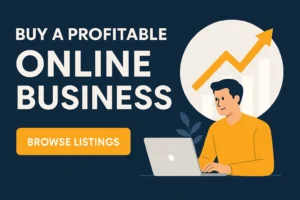Table of Contents
Toggle1. Understand your Audience’s Needs
First things first, I need to understand my audience’s needs thoroughly. My goal is not only to bring traffic to my website but also to convert that traffic into leads and sales. This is where I focus on identifying my target audience. I delve into their interests, behaviors, and online activities. I use tools like Google Analytics and Google Search Console to learn about my audience’s demographics and search behavior. Understanding my audience helps me align my SEO and marketing strategies to their needs, ensuring my content is not only found but also relevant and engaging.
2. Keyword Research and Optimization
To convert impressions into leads, I need to get my content found by my target audience. Keyword research is crucial in this aspect. I use tools like Google Keyword Planner and SEMRush to find keywords related to my product or service. I focus on long-tail keywords that are less competitive yet high in search volume. These keywords help me rank higher in search results and attract a more targeted audience. Once I identify my keywords, I incorporate them into my website’s content, meta tags, and URLs to optimize my site for SEO.
3. Create High-Quality Content

Creating high-quality content is paramount. Google’s latest algorithms prioritize valuable and engaging content. Thus, I always strive to create original, informative, and compelling content that not only answers my audience’s queries but also encourages them to take action. I follow E-A-T (Expertise, Authority, Trustworthiness) guidelines to make my content more credible and appealing to Google. I use my identified keywords naturally within the content, ensuring it doesn’t feel forced or spammy.
4. On-Page SEO Optimization
To make my website more visible to my target audience, I optimize all elements on my webpage. This includes title tags, meta descriptions, and images. I ensure my title tags are compelling, under 60 characters, and include my target keyword. The meta descriptions are accurate and engaging and entice users to click on my website link. I also use alt tags for my images, including relevant keywords to make them SEO-friendly.
5. Improve User Experience
Google’s Core Web Vitals update focuses on user experience. Therefore, I prioritize improving my website’s load speed, interactivity, and visual stability. I optimize my images, leverage browser caching, and minimize CSS to boost my website speed. I ensure my website is mobile-friendly, easy to navigate, and provides an enjoyable user experience.
6. Use Google My Business

To enhance my local SEO and attract local customers, I use Google My Business. This tool allows me to list my business on Google Maps and local search results, improving my visibility to potential local customers. I keep my listing updated with accurate information, respond to reviews, and post regularly about my business.
7. Leverage Social Proof
To build trust and credibility, I showcase customer reviews, testimonials, and case studies. This social proof not only enhances my business reputation but also encourages potential customers to engage with my business. Google’s latest algorithms consider user engagement signals like comments and shares. Thus, social proof can also help improve my SEO.
8. Use Calls-to-Action (CTAs)

To convert my website visitors into leads or customers, I use persuasive CTAs. These CTAs guide users through my website and encourage them to take specific actions like signing up for a newsletter, downloading a guide, or making a purchase.
9. Conversion Rate Optimization (CRO)
Once I start driving traffic to my website, I focus on converting these visitors into leads and customers. I use A/B testing to experiment with different website elements and identify what works best for my audience. I track my website metrics and adjust my strategies accordingly to maximize conversions.
Through this proactive and data-centric CRO training, my website constantly evolves to meet the ever-changing needs and preferences of my audience, resulting in increased lead generation and customer retention.
10. Regular Monitoring and Updates
Lastly, I keep a close eye on my SEO and marketing performance. I regularly check my website analytics to understand what’s working and what needs improvement. I keep my website updated according to the latest Google algorithm changes. This helps me stay on top of my game and ensure my strategies are always aligned with Google’s guidelines.
In conclusion,
Converting Google search impressions into leads and sales requires a comprehensive and strategic approach. By understanding my audience, optimizing my website for SEO, creating high-quality content, and focusing on user experience and conversions, I can effectively transform impressions into tangible business results. Remember, SEO is a marathon, not a sprint, and it requires ongoing effort and adaptation to reap the benefits. Stay consistent, and the results will follow.






